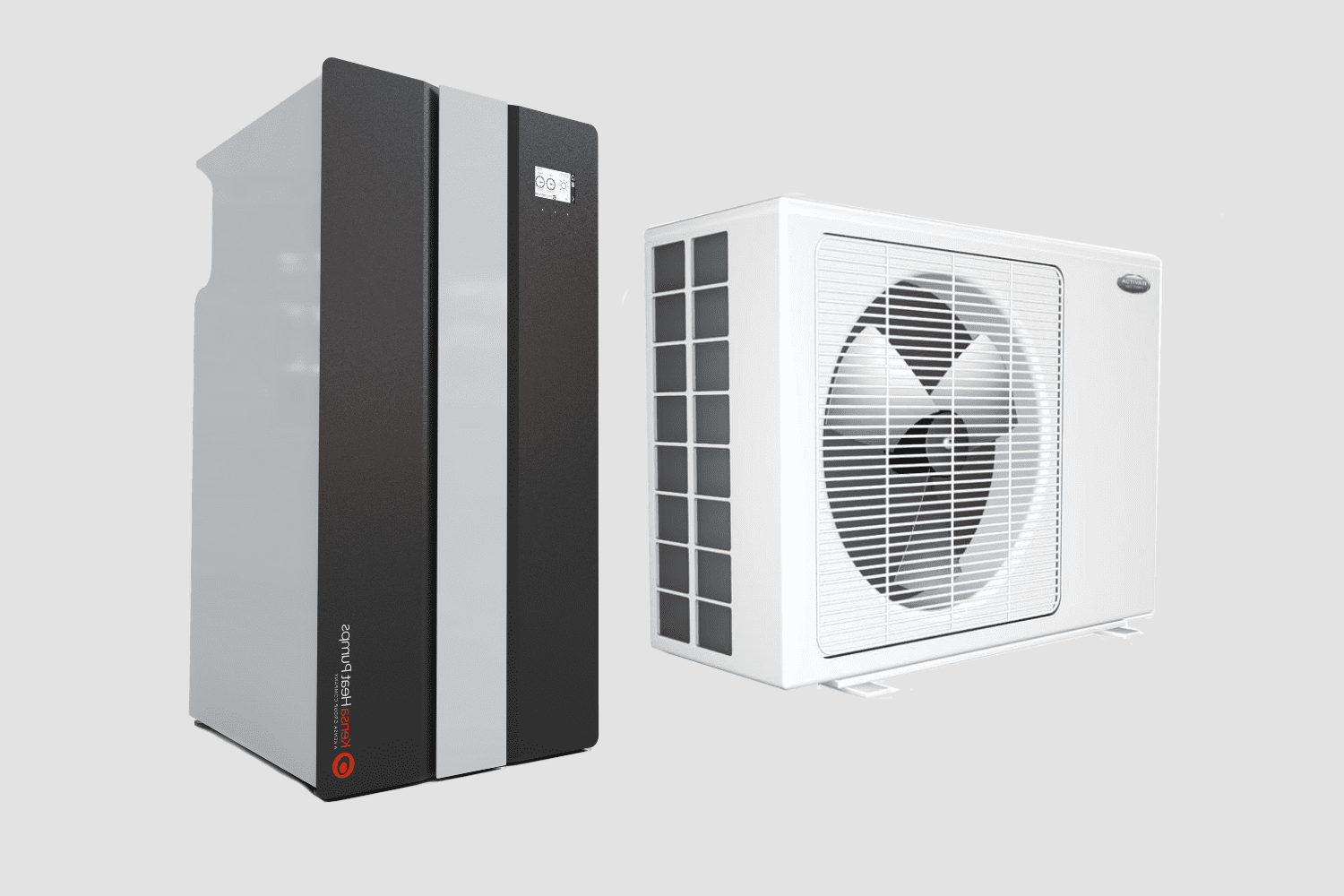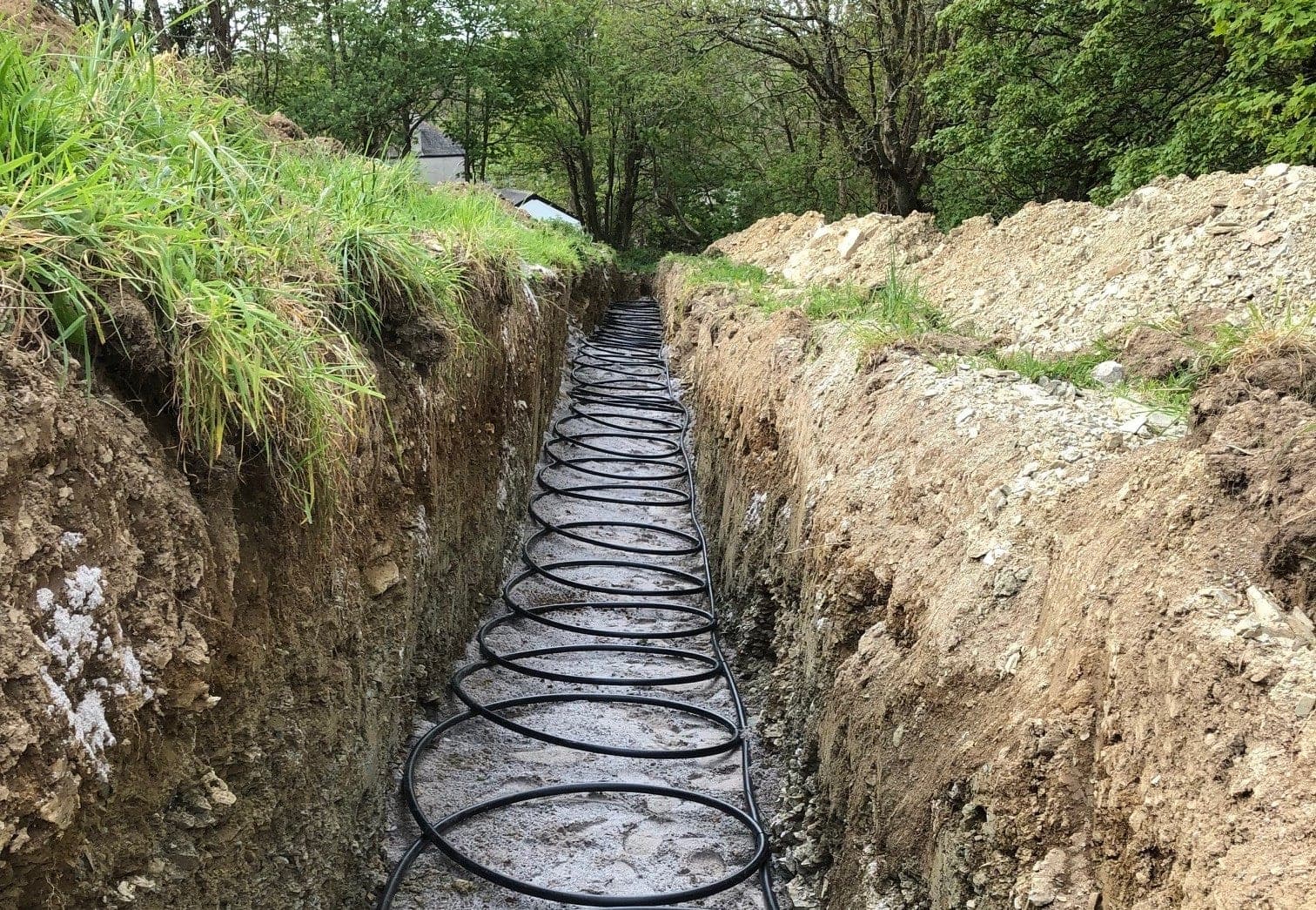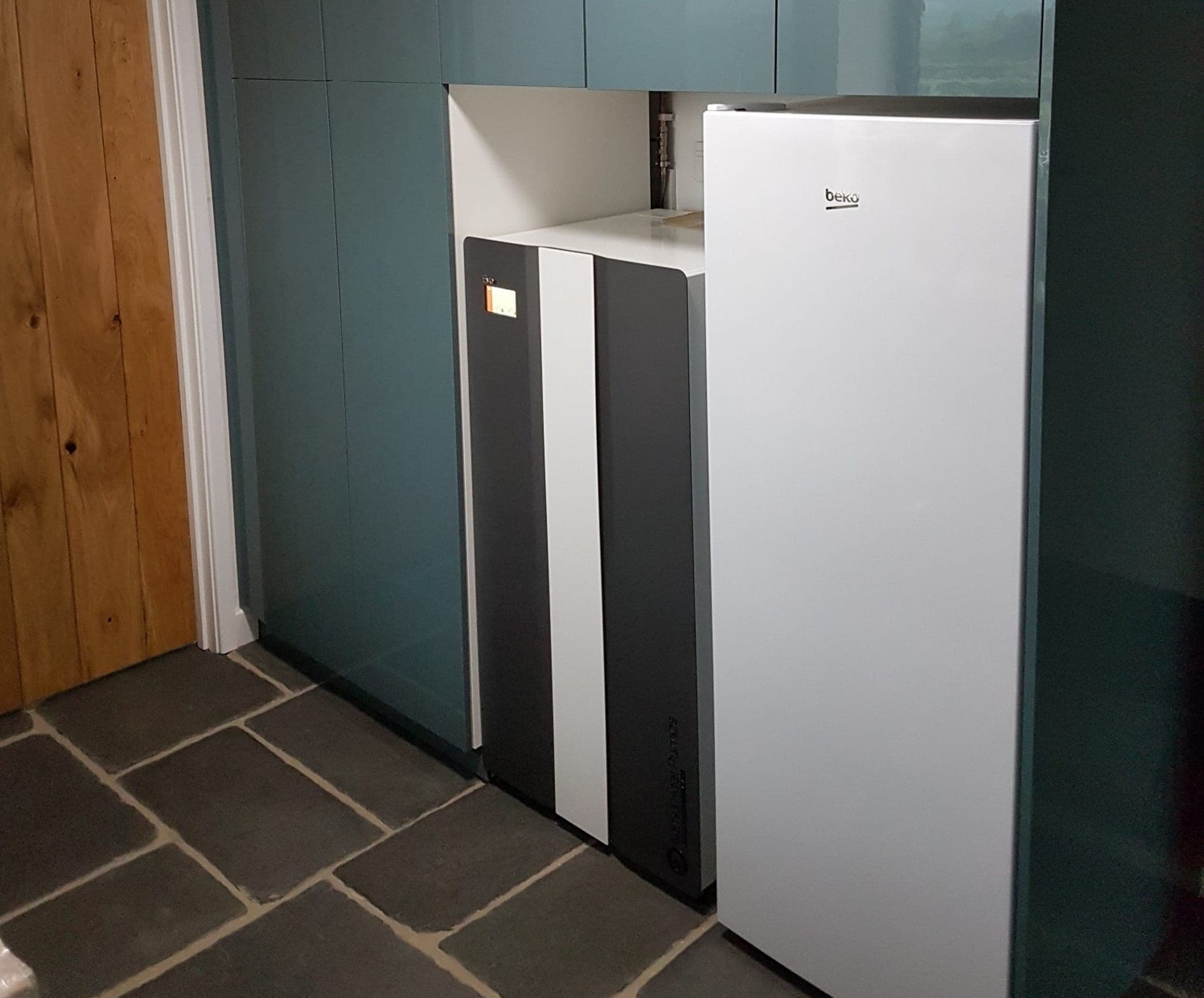Air Source vs. Ground Source Heat Pumps

Differences in efficiency
Air source heat pumps
Air source heat pumps use heat energy from the air to ‘pump’ higher temperature heat into a building. The efficiency of an air source heat pump varies across the seasons and time of day. They can be especially problematic in winter because when you need heating the most, the air – its source of energy – is at its coldest, and the unit will require more electricity to operate efficiently. The true efficiency of air source heat pumps can be difficult to ascertain. Their performance in test conditions is usually based on an inlet temperature of 7°C, which is not realistic, as the air temperature fluctuates. On the other hand, ground source heat pumps are tested by their performance with an inlet temperature of 0°C – representing true climate conditions.Ground source heat pumps
The ground can maintain temperatures of 10-12°C all year, which means the average ground temperature in winter will always be significantly warmer than the average air temperature. As a result, the source temperature for a ground source heat pump on the coldest day can be up to 15°C warmer than the cold air coming into an air source heat pump. This means no unexpected spikes in electricity use, as a ground source heat pump does not have to work as hard to upgrade the source’s energy into usable heat for space heating and hot water – making it more efficient for heating and hot water systems. Unlike air source, a ground source heat pump also offers efficiency in terms of operational times. Using smart controls and time-of-use tariffs, a ground source heat pump can participate in load shifting, where times of electricity consumption can be shifted to low-cost or low-carbon hours.
Upfront price & running costs
Air source
Air source heat pumps are typically cheaper than ground source heating systems, as you only have to pay for the unit itself. A ground source unit, however, comes with the additional cost of groundwork and ground arrays. Despite this, due to the lower efficiency of air source heat pumps and the need to pay for more electricity to bring colder air up to temperature, air source heating could end up costing end-users more in the long run. Another disadvantage is that air source heat pumps are ineffective with time-of-use tariffs – an electricity tariff that provides customers with dynamic pricing to reflect demand on the electricity grid. These innovative tariffs allow users to make savings by avoiding running their appliances at peak times. This is not much use with an air source heat pump, as the air temperature is usually significantly cooler at 2 am – when the tariff is likely to be cheaper – than 2 pm, meaning an air source unit will operate at its lowest efficiency at the times when electricity is cheapest. Meanwhile, the prevailing air temperature does not impact the performance of a ground source heat pump, as the ground arrays are buried at sufficient depth and insulated from such fluctuations, and the unit can be run overnight when electricity prices are lowest.Ground source
The cheaper upfront cost of an air source heat pump seems appealing in the short term. Unfortunately, any initial savings could be quickly negated by higher running costs due to lower efficiencies. Air source units have a shorter lifespan because they are exposed to the elements. They also receive £1,000 less grant funding from the Boiler Upgrade Scheme versus ground source heating. Both air source and ground source heating share the same costs when it comes to the internal heating distribution system, such as radiators or underfloor heating. All in all, the exceptional efficiency of ground source technology pays dividends in the long term. As well as this, Kensa envisages a ground array infrastructure that mimics the gas network, where the price of the heat pump itself is separated from the ground array. The infrastructure would instead be funded by, for example, private entities, in return for an annual connection fee. This would mean the consumer only has to pay for the ground source heat pump alone.

Installation & planning permission
Air source
An air source heat pump is relatively simple to fit outside of the property. Unlike a ground source heat pump, there is no need for ground arrays such as slinky pipe trenches or boreholes. However, the majority of air source heat pumps require planning permission because of their high noise output and the fact that they must be fitted outside of the property. For those reasons, they are not recommended for high-density areas or communities.Ground source
A ground source heat pump generally doesn’t require planning permission, is visually unobtrusive, and runs durably from the comfort of the building. All of the factors contribute to the 20-year design life of the unit, which isn’t exposed to the elements. The groundwork for a ground source heat pump installation is undertaken by specialist subcontractors, with minimal disruption. Once the groundwork has been completed, installing the ground source heat pump unit inside the property is no different to fitting a traditional boiler in an airing cupboard or cabinet.

Space requirements
Inside the building
The average ground source heat pump unit is comparable in size to a small fridge, and due to its low noise output, can be comfortably installed inside the home in a kitchen, utility room or specially designed plant room. Most ground source heat pumps run quietly and discreetly; In fact, our Kensa Evo heat pump is one of the quietest on the market – equating to the sound of a dishwasher. Kensa has also designed the smallest and most compact ground source heat pump on the market – the Shoebox heat pump – which is perfect for flats or smaller properties and easily fitted inside airing cupboards or kitchen cabinets.The groundwork
There is a common perception that many properties won’t have the space for a ground array. In some cases, calculations may show that the available garden area isn’t quite big enough to meet the heat load. An energy-efficient solution is to improve the building’s insulation to reduce the heat load. By reducing the heat load, the available garden area may well become viable as the heat source. It may even be possible to specify a smaller heat pump, further offsetting the insulation costs. Rather than being viewed as a cost burden, Kensa views ground arrays as an asset that can unlock all the advantages of ground source heat pumps. Ground arrays last over 100 years; they are buried, making them entirely unobtrusive. They allow for effective, sustainable renewable heat extraction – a network that is scalable and perfectly suited to large-scale domestic developments.
Carbon emissions
Due to its inherent efficiencies, a ground source heat pump is the lowest carbon heating system. Under the Standard Assessment Procedure (SAP), a rating of a property’s energy efficiency from 1 – 100, the default value of ground source efficiency for MCS installations is 320%, while air source is 250%.
This shows that the more efficient a system is – through crucial elements such as design and installation – the lower its carbon intensity can be. Variables such as the heat distribution system and the heat source can make a significant difference; Kensa can support the design of the heat pump system to ensure you get the most efficient solution possible.
Product life
Air source
An air source heat pump tends to last just 10 years due to its exposure to external elements. In fact, there are some locations where air source is not recommended at all, such as close to the coast, where the saltwater from the sea causes internal components to rust and stop functioning.Ground source
A ground source unit is a closed system that is installed safely inside the property, protecting the asset from environmental damage and an unlike air source unit, avoiding the risk of theft. The unit itself needs very little maintenance and has a design life of 20 years, while the buried ground array it’s connected to is entirely unobtrusive and can last over 100 years.
Mass deployment & net-zero ambitions
As you have already seen, there are significant differences between the two technologies, and these become especially clear when observed against the scale of mass deployment. Large-scale delivery will play a vital role in helping to meet the UK Government’s target of net-zero carbon by 2050.
Air source
It’s important to know that any heat pump rollout programme featuring large numbers of air source heat pumps will require far more back-up generating and storage capacity than ground source. This is because the efficiency of air source heat pumps is hugely compromised in cold weather when the air temperature drops, which coincides with when heat demand is at its peak. Hypothetically, if all homes across the UK were installed with air source heat pumps – on the coldest day of the year – the air source units would require additional power grid capacity equivalent to 2,400 x 10MW wind turbines or 8 x 3GW nuclear power stations versus the same homes heated with ground source heat pumps.¹Ground source
Sub-surface ground (and water) temperatures remain fairly stable night or day, all year round. As a result, the source temperature for a ground source heat pump on the coldest day can be up to 15°C warmer than the cold air coming into an air source heat pump. A higher source temperature means the ground source heat pump has to do less ‘work’ to produce temperatures useful for home heating; this means less electricity is consumed, which results in higher efficiency. The mass deployment of ground source heat pumps will help reduce the additional generating capacity required to support any electrification of heat strategy. This is because ground source heat pumps can run at times when electricity demand is lowest and prices are therefore cheapest, and also when there is more power available from renewable electricity generation sources, such as wind and solar, meaning the electricity supplied is lowest in carbon.
1. Based on the following conditions:
24 million homes with 6kW average heat loss, coldest day efficiency for air source vs. ground source heat pumps – ASHP: 200% , GSHP: 300%